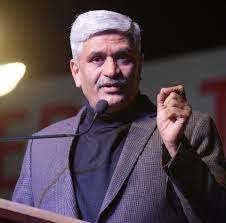Cabinet nod to programme for maintaining, improving 736 dams
Asked which dams will be taken up first for rehabilitation, maintenance and improvement, he said since the ownership of the dams is with the states, they will prioritise and send their proposals. The plan also involves reenforcement, reconstruction and capacity building of existing dams.

- Country:
- India
The Union Cabinet on Thursday approved a project to ensure maintenance and improvement of 736 dams in 19 states in the next 10 years. Jal Shakti Minister Gajendra Singh Shekhawat told reporters at a cabinet briefing here that the dam rehabilitation and improvement programme phases two and three will be completed under a 10-year plan at a total cost of Rs 10,211 crore.
Providing details, he said the first phase of the programme was launched in 2012. It ended in 2020 under which 223 dams in seven states were included. Eighty per cent of the amount under the plan will be funded by the World Bank and another organisation. Asked which dams will be taken up first for rehabilitation, maintenance and improvement, he said since the ownership of the dams is with the states, they will prioritise and send their proposals.
The plan also involves reenforcement, reconstruction and capacity building of existing dams. A separate programme for the training of officers in this regard is already on.
During the Cabinet meeting, the prime minister also approved a proposal for spending four per cent of the total amount of the project for building tourism-based activities, including water tourism at the existing dams. India is third in the world after China and the US to have big dams.
India has a total of 5,334 big dams and 411 dams are under construction. Eighty per cent of the existing dams are more than 25 years old with some 100-year-old dams also functional, which require serious maintenance, reenforcement and capacity building as they were built using older technology.
(This story has not been edited by Devdiscourse staff and is auto-generated from a syndicated feed.)
- READ MORE ON:
- Gajendra Singh Shekhawat










